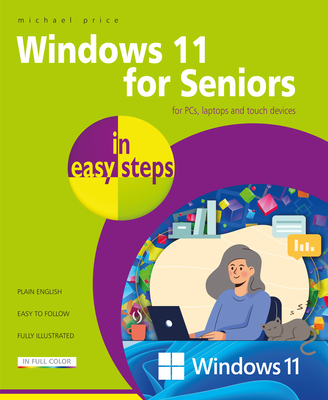Introduction to Spring 6, Spring Boot 3, and Spring REST Training in Vancouver, Canada
|
We offer private customized training for groups of 3 or more attendees.
|
||
Course Description |
||
| The course introduces the many Spring Core capabilities, as well as providing guidelines on when and how to use them. It also goes into considerable depth on using Spring Boot for dependency management and auto-configuration, as well as Spring REST for creating RESTful resources. It utilizes Spring Boot's easy configuration and auto-configuration wherever possible. "Classic" Spring configuration (usually more verbose and complicated) is optionally covered in abbreviated form. The course starts with in-depth coverage of Spring’s Core module to reduce coupling and increase the flexibility, ease of maintenance, and testing of your applications. It goes on to cover many of the most important capabilities of Spring, including easing configuration with Spring Boot, integrating JPA persistence layers with Spring and Spring Data, and using Spring’s declarative transaction capabilities. The course includes a solid introduction to Spring REST, and coverage of building RESTful resources. It also covers many of the details of Spring Boot, including how to create Boot-based POMs (maven) for simplified dependency management, customizing Boot behavior, and understanding/managing Boot’s auto-configuration. This course is hands on with labs to reinforce all the important concepts. It will enable you to build working Spring applications and give you an understanding of the important concepts and technology in a very short time.
Course Length: 5 Days
Course Tuition: $2250 (US) |
||
Prerequisites |
|
| Working knowledge of Java programming, including use of inheritance, interfaces, and exceptions | |
Course Outline |
|
Session 1: Introduction to Spring
Overview of Spring Technology
Motivation for Spring, Spring Architecture
The Spring Framework
maven and Spring
Spring Introduction
Declaring and Managing Beans
ApplicationContexts - The Spring Container
XML and @Component/@Named Config
Dependencies and Dependency Injection (DI)
Examining Dependencies
Dependency Inversion / Dependency Injection (DI)
DI in Spring - XML and @Autowired
Spring Boot Quickstart
Session 2: Configuration in Depth
Java Based Configuration (@Configuration)
Overview, @Configuration, @Bean
Dependency Injection
Resolving Dependencies
Integrating Configuration Types
XML and @Component Pros/Cons
@Configuration Pros/Cons
Choosing a Configuration Style
Integrating with @Import and <import>
Bean Scope and Lifecycle
Singleton, Prototype, and Other Scopes
Configuring Scope
Bean Lifecycle / Callbacks
Session 3: Intro to Spring Boot
Spring Boot Overview
Spring POMs with Boot Parents
Spring Boot Starters
SpringApplication – Apps With main()
CommandLineRunner and ApplicationRunner
Working with Properties
Boot Property Files
Using Application Properties
Customizing Behavior with Boot Properties
Session 4: Spring Testing
Testing and JUnit 5 Overview
Writing Tests - Test Classes, asserts, Naming Conventions
Running Tests - IDE, maven, ...
Test Fixtures - setup and teardown
Spring TestContext Framework
Overview
Configuration
Running Tests
Session 5: Database Access with Spring/Boot
Overview of Spring/Boot database support
DataSources, Boot Auto-Configuration, and Custom Configuration
Boot - Embedded Database
Using Spring/Boot with JPA
Spring Boot Auto-Configuration and Scanning
Customizing the Configuration
Creating a JPA Repository/DAO Bean - @PersistenceUnit, @PersistenceContext
Spring Data Overview
Overview and Architecture
Configuring Spring Data
Repositories and JPA Repositories
Using CrudRepository
Using Spring Data
Naming Conventions for Querying
Creating more Complex Queries
Query Configuration
[Optional] Configuration Without Boot
Managing the EntityManager (EM)
LocalContainerEntityManagerFactoryBean and Container-managed EMs
JEE and JNDI Lookup of the EM
Configuration and Vendor Adaptors
Session 6: Spring Transaction (TX) Management
Overview
Declarative TX Management (REQUIRED, etc.)
TX Scope and Propagation
Configuration and Boot Auto-Configuration
Pointcut-based Configuration of Transactions
Session 7: RESTful Services with Spring
REST Overview and Principles
DispatcherServlet - Boot Auto-Config and Customization
Requests and Responses - GET, POST, PUT, DELETE
Spring's REST API
Spring support for REST
@RequestMapping/@PathVariable, @RequestBody, @ResponseBody
URI Templates and @PathVariable
Controllers with @RestController
Ajax Overview
Session 8: Working with JSON and XML
Generating JSON
JSON Overview
JSON Representations for Resources
Message Converters
[Optional] Generating XML
JAXB and Jackson Message Converters for XML
JAXB / @XmlRootElement
Content Negotiation
Session 9: Java Clients for RESTful Services
Client Requirements and Spring's RestTemplate
getForObject() / getForEntity()
Other RestTemplate Methods
Accessing Headers / exchange()
Session 10: Common REST Patterns
GET: Read
POST: Create
PUT: Update
DELETE: Delete
Programming on server side, and client side (with RestTemplate)
Session 11: Boot Configuration and Customization
Logging and its Configuration
Profiles
Other Configuration
Session 12: Spring Boot Web/Security
Spring Boot Web
Boot's Embedded Servers
Classic Spring MVC Configuration
Spring Boot Security
Spring Boot Data REST
Session 13: Additional Spring/Boot Features
Updates to Spring Core
Jakarta EE 9 Baseline
WebFlux / Reactive Web Framework
Boot Actuator
|
Course Directory [training on all levels]
- .NET Classes
- Agile/Scrum Classes
- AI Classes
- Ajax Classes
- Android and iPhone Programming Classes
- Azure Classes
- Blaze Advisor Classes
- C Programming Classes
- C# Programming Classes
- C++ Programming Classes
- Cisco Classes
- Cloud Classes
- CompTIA Classes
- Crystal Reports Classes
- Data Classes
- Design Patterns Classes
- DevOps Classes
- Foundations of Web Design & Web Authoring Classes
- Git, Jira, Wicket, Gradle, Tableau Classes
- IBM Classes
- Java Programming Classes
- JBoss Administration Classes
- JUnit, TDD, CPTC, Web Penetration Classes
- Linux Unix Classes
- Machine Learning Classes
- Microsoft Classes
- Microsoft Development Classes
- Microsoft SQL Server Classes
- Microsoft Team Foundation Server Classes
- Microsoft Windows Server Classes
- Oracle, MySQL, Cassandra, Hadoop Database Classes
- Perl Programming Classes
- Python Programming Classes
- Ruby Programming Classes
- SAS Classes
- Security Classes
- SharePoint Classes
- SOA Classes
- Tcl, Awk, Bash, Shell Classes
- UML Classes
- VMWare Classes
- Web Development Classes
- Web Services Classes
- Weblogic Administration Classes
- XML Classes
Java Programming Uses & Stats
|
Difficulty
|
Popularity
|
Year Created 1995 |
|
Pros
Most Commonly Used:
Great Career Choice:
Android Apps Development:
It Can Run On Any Platform:
Great Supporting IDE's: |
Cons
Uses a Lot of Memory:
Difficulty in Learning:
Slow Start Up Times:
Verbose and Complex Code:
Commercial License Cost: |
| Java Programming Job Market |

Average Salary
|

Job Count
|

Top Job Locations
New York City |
|
Complimentary Skills to have along with Java Programming
- If you are an experienced Java developer, learning a complimentary language to Java should come much more naturally. As an example JetBrains recently created the Kotlin programming language which is officially supported by Google for mobile development. Kotlin compiles to Java bytecode and runs on the JVM; it's purported to address many of Java's shortcomings... |






